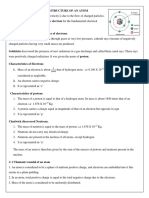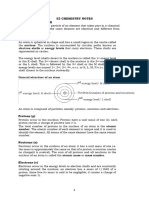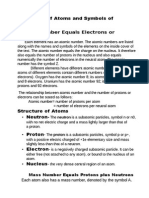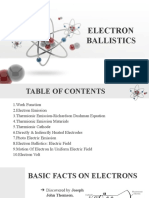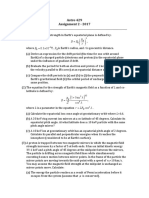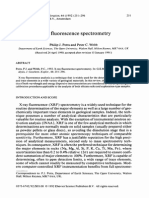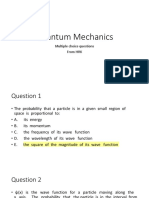0% found this document useful (0 votes)
23 views13 pagesSection A - Chapter 3 (Atomic Structure Handout)
This chapter covers the principles of atomic structure, including definitions of atoms, subatomic particles, atomic and mass numbers, and nuclear notation. It explains the arrangement of electrons, isotopes, and the concept of radioactivity, along with practical applications of radioactive isotopes. Key topics include electronic configuration, the mass of atoms, and the uses of isotopes in dating, cancer treatment, energy generation, and medical research.
Uploaded by
Karen LondonCopyright
© © All Rights Reserved
We take content rights seriously. If you suspect this is your content, claim it here.
Available Formats
Download as PDF, TXT or read online on Scribd
0% found this document useful (0 votes)
23 views13 pagesSection A - Chapter 3 (Atomic Structure Handout)
This chapter covers the principles of atomic structure, including definitions of atoms, subatomic particles, atomic and mass numbers, and nuclear notation. It explains the arrangement of electrons, isotopes, and the concept of radioactivity, along with practical applications of radioactive isotopes. Key topics include electronic configuration, the mass of atoms, and the uses of isotopes in dating, cancer treatment, energy generation, and medical research.
Uploaded by
Karen LondonCopyright
© © All Rights Reserved
We take content rights seriously. If you suspect this is your content, claim it here.
Available Formats
Download as PDF, TXT or read online on Scribd
/ 13



















